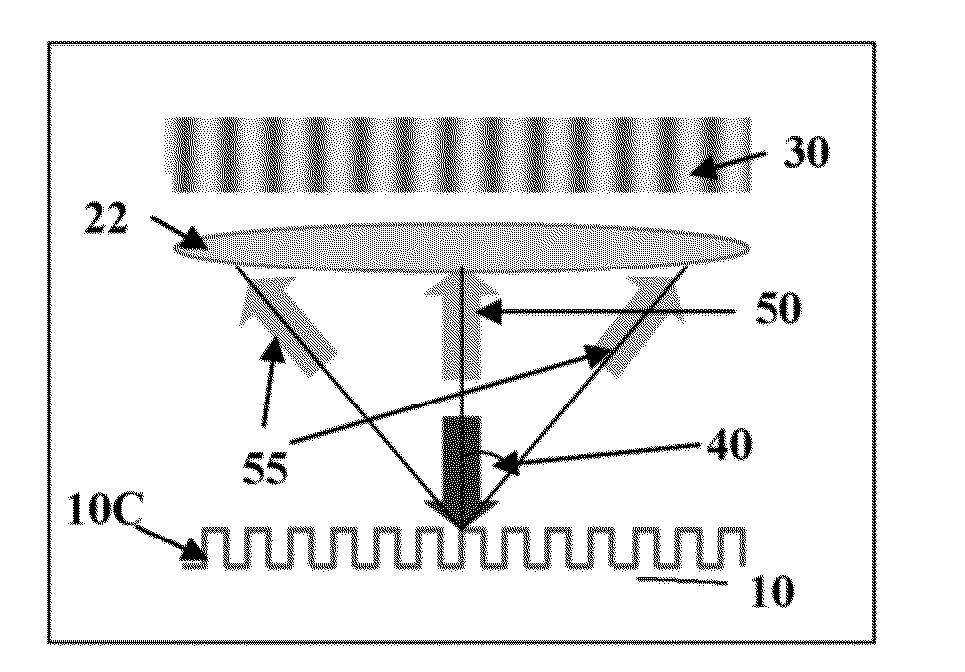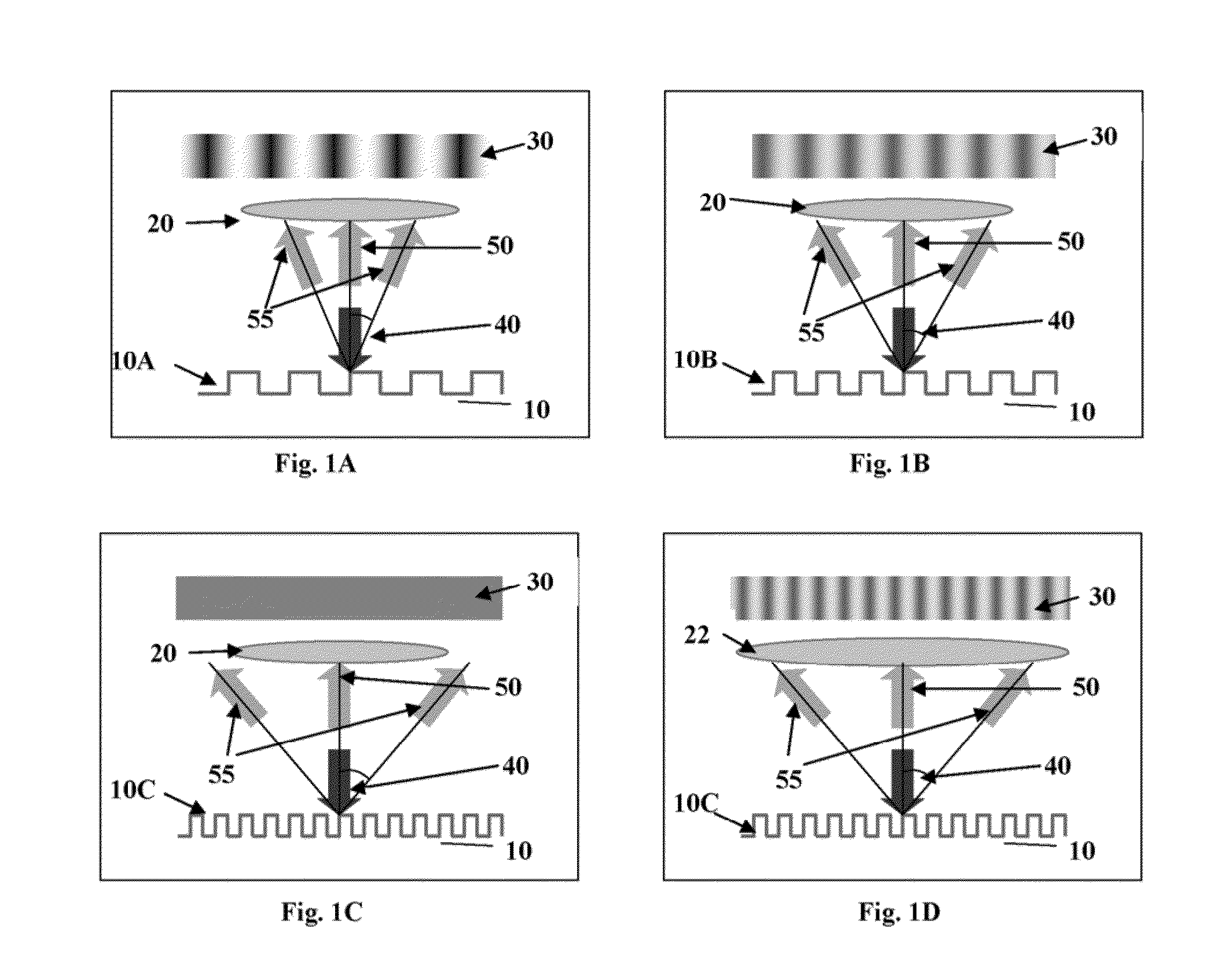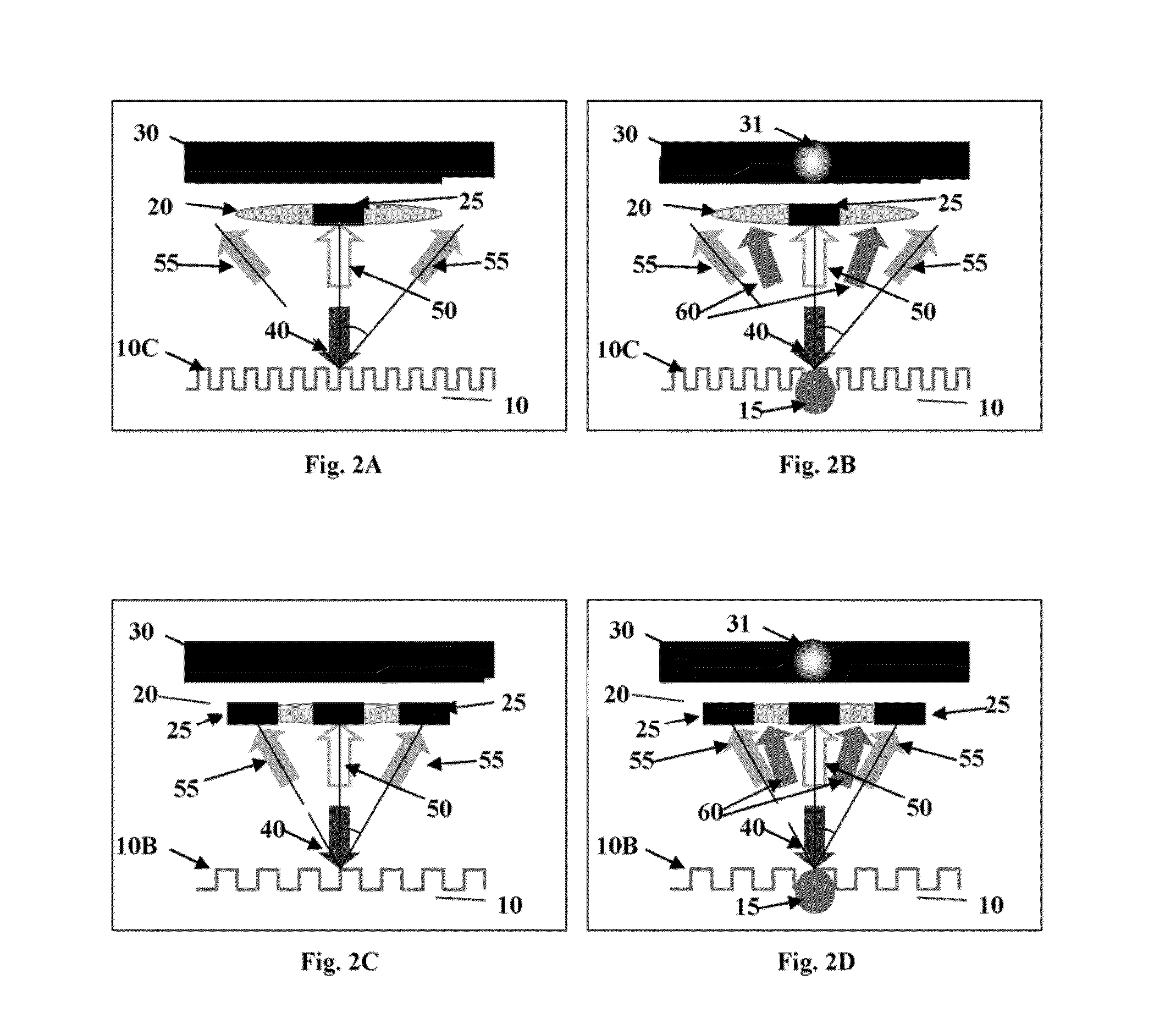Optical system and method for inspection of patterned samples
a technology of optical system and sample, applied in the field of optical inspection, can solve the problems of bf inspection reaching its limit, certain defects cannot be detected by traditional bf inspection systems, etc., and achieve the effect of increasing the collection region of scattered light, maximizing the effective collection region, and increasing the pitch siz
- Summary
- Abstract
- Description
- Claims
- Application Information
AI Technical Summary
Benefits of technology
Problems solved by technology
Method used
Image
Examples
Embodiment Construction
[0047]The general principles of bright field and dark filed inspections of patterned samples are illustrated in FIGS. 1A to 1D and FIGS. 2A to 2D. To facilitate understanding, the same reference numbers are used for identifying components that are common in all the examples.
[0048]It should be noted that, generally, a pattern on the sample's surface may be in a form of a surface relief as shown in FIGS. 1A to 1D, and / or may be defined by regions of different optical properties with respect to given illumination, i.e., regions of different reflection, absorption or transmission properties.
[0049]In FIG. 1A, a sample 10 having a periodic pattern of a certain spatial frequency on its surface 10A is illuminated by an optical beam 40 of a certain wavelength λ (e.g., including ultraviolet and / or infra red illumination) creating an illumination spot on the surface of the sample 10. Light is reflected back from the pattern 10A in different directions according to several diffraction orders. T...
PUM
| Property | Measurement | Unit |
|---|---|---|
| optical inspection | aaaaa | aaaaa |
| dimension | aaaaa | aaaaa |
| pitch size dimension | aaaaa | aaaaa |
Abstract
Description
Claims
Application Information
 Login to View More
Login to View More - R&D
- Intellectual Property
- Life Sciences
- Materials
- Tech Scout
- Unparalleled Data Quality
- Higher Quality Content
- 60% Fewer Hallucinations
Browse by: Latest US Patents, China's latest patents, Technical Efficacy Thesaurus, Application Domain, Technology Topic, Popular Technical Reports.
© 2025 PatSnap. All rights reserved.Legal|Privacy policy|Modern Slavery Act Transparency Statement|Sitemap|About US| Contact US: help@patsnap.com



